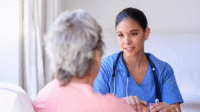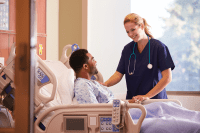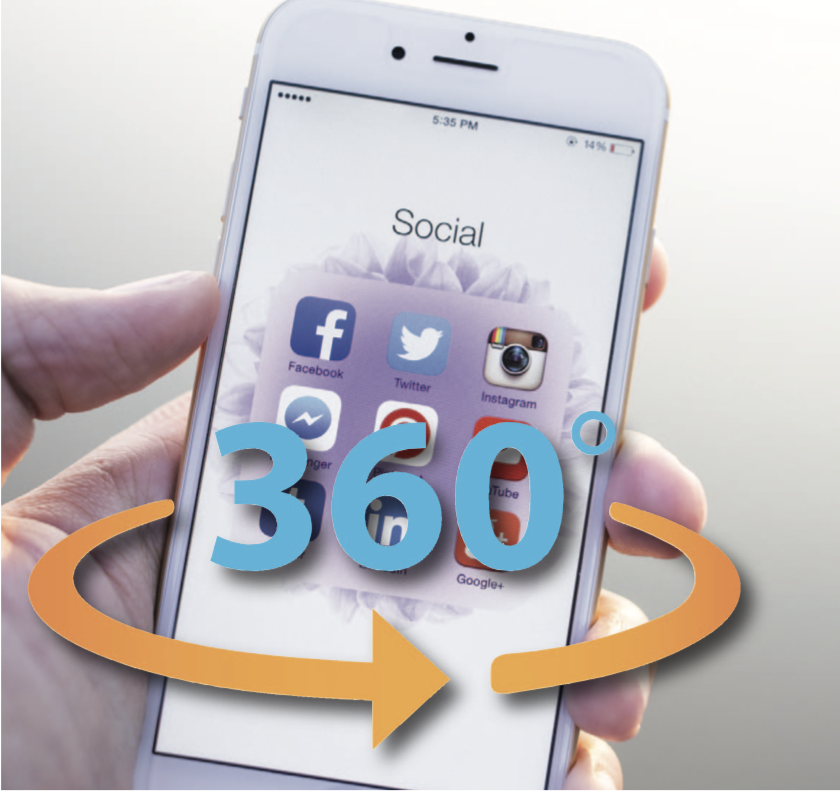Communication within a hospital, health system, or clinic is profoundly important. When it breaks down, clinical outcomes may be affected directly. According to The Joint Commission, 62% of accidental deaths and 80% of serious medical errors are linked to communication failures. Communication errors also can reduce the bottom line. University of Maryland researchers found communication inefficiencies lead to $12 billion in excess costs or lost revenue annually.
Successful organizations create consistent, seamless care experiences at every stage of the patient’s healthcare journey—even beyond hospital walls to conduct follow-up by telephone at home or in skilled nursing facilities. Communication is the crux of these experiences—and communication between nurses and patients is especially important. Not only must we be present physically for patients and families, but we also must assure them we’re fully aware of and actively managing all aspects of their care.
Care rounding and care calls
Care rounding and care calls can help achieve a more humanized approach.
- Rounding on patients can improve clinical quality and promote patient and staff satisfaction. Nurse rounding has had dramatic effects on care quality and satisfaction by decreasing call-light use and patient falls. Patients use call lights to notify nurses of both life-threatening issues and less urgent needs. When patients understand a staff member will be accessible on an ongoing basis via rounding, they tend to reduce their use of call lights for nonemergency requests.
- Care calls, or postdischarge telephone calls made by nursing staff to the patient, bring the care journey full circle by helping to prevent adverse events and improve the quality of both patient and caregiver experiences.
When implemented simultaneously, purposeful care rounding and care calls can yield even greater increases in patient outcomes and satisfaction. Hospitals can take care rounding and care calls one step further by hardwiring these processes using intelligent, integrated technology. This can simplify communication and streamline workflows to help nurses work smarter, not harder. When incorporated into care rounding, technology can provide visibility in workflows, which helps management identify gaps in nurse communication and reward high performance. (See Alarms for patient falls.)
Organizations with standardized rounding practices have seen improvements in patient experiences, as shown by significantly higher scores on Healthcare Consumer Assessment of Healthcare Providers and Systems surveys. Technology allows these organizations to measure patient experiences in real time during a hospital stay, helping them to evaluate gaps and deploy improvement interventions.
How mobile technology can improve discharge education
Research shows that one of the most important components of the patient experience comes at the end of the hospital stay. Whether the patient is headed home or to another care facility, comprehensive discharge education is crucial. Missed, rushed, or ignored discharge teaching leaves both patients and the healthcare system vulnerable. Conversely, studies show that patients who understand their postdischarge care are 30% less likely to be readmitted or to visit the emergency department shortly after discharge.
Poor communication and coordination around the daily plan of care can pose a barrier to effective discharge. The plan of care should incorporate the entire inter- or multidisciplinary team, including rounding, to ensure that the team and the patient are “on the same page” throughout the stay.
During the discharge process, most organizations have nurses deliver instructions to the patient during brief bedside teaching and then provide complex paperwork, including details on new medications. But at discharge time, many patients are anxious or focused on going home and don’t pay full attention to the instructions or read through the paperwork fully. A simple solution is to use mobile technology that allows nurses to record discharge instructions at the bedside, which patients and home caregivers can access later at any time by phone or computer. Blending best practices with technology solutions, nurses can improve patient understanding of and adherence to discharge instructions by:
- recording and attaching live audio instructions, videos, and pictures from a mobile device
- providing access to patient-specific education and links to valuable healthcare resources
- capturing and delivering information using applications compliant with the Health Insurance Portability and Accountability Act of 1996 (HIPAA) and the Health Information Technology for Economic and Clinical Health (HITECH) Act
- creating and sending text reminders, emails, tasks, and care messages to patients
- monitoring instruction retrieval.
Recording discharge instructions has shown to increase patient compliance, reduce unnecessary readmissions, and increase satisfaction.
To further reiterate important teaching and clarify postdischarge instructions, nurses should call patients 48 to 72 hours after they leave the hospital. The care-call process can be hardwired into hospital technology to streamline and standardize nurse workflows. Technological solutions may include best-practice checklists, call scripts, and even risk-stratification information, which can be used to identify patients at highest risk for readmission.
Using the performance analytics tool of the technology solution, hospital management can:
- audit discharge instructions and other patient communications
- ensure care instructions are handled consistently throughout the organization
- stratify patients most at risk for readmission
- monitor staff compliance and competency
- identify staff recognition and teaching opportunities.
Closing the gap
To increase patient satisfaction and drive growth and loyalty, healthcare facilities must be committed to providing humanized, seamless care. They can do this more effectively through such nurse communication processes as care rounding and care calls. These processes can be implemented into the nurse workflow through technology that builds trust and relationships and creates connectivity with patients outside the hospital walls. Closing the communication gaps that separate nurses, patients, and families improves patient and staff satisfaction and clinical outcomes while bringing financial benefits to the organization.
Selected references
Agarwal R, Sands DZ, Schneider JD. Quantifying the economic impact of communication inefficiencies in U.S. hospitals. J Healthc Manag. 2010;55(4):265-81.
Jack BW, Chetty VK, Anthony D, et al. A reengineered hospital discharge program to decrease rehospitalization: a randomized trial. Ann Intern Med. 2009;150(3):178-87.
Joint Commission Resources. The Joint Commission Guide to Improving Staff Communication. 2nd ed. Oakbrook Terrace, IL: Joint Commission Resources; 2008.
Setia N, Meade C. Bundling the value of discharge telephone calls and leader rounding. J Nurs Adm. 2009;39(3):138-41.
Rhonda Collins is chief nursing officer at Vocera Communications in San Jose, California.
Read the next article: Using mobile technology to engage nursing staff


















